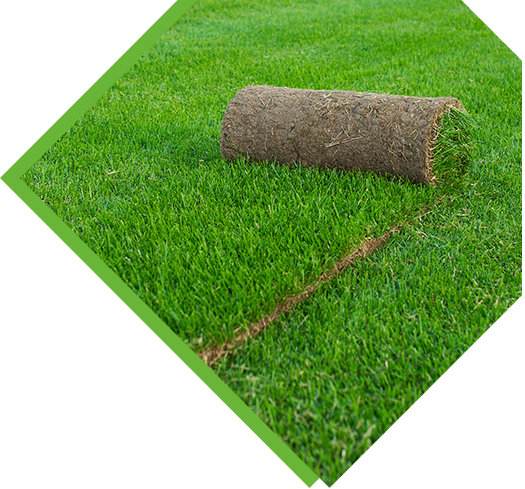Technique for laying roll-out lawns

Substrate preparation
A substate is defined as permanent terrain in the form of native soil or a specially created load-bearing layer over which the turf will be placed. The area for laying a roll-out lawn should be properly prepared. It should be dug, levelled, freed from construction remains (such as stones and debris) and cleared of unnecessary trees and shrubs. The optimally prepared soil should be light and permeable, so sometimes it needs to be thinned with sand beforehand. These steps make up the best method of land preparation for laying a lawn.
Turfing difficult areas
The most difficult areas for laying a roll-out lawn include areas with a significant inclination or difficult grass conditions (e.g. parking lots and green strips on highways). Turfing and strengthening of this type of surface is extremely problematic due to the difficult access. The most important purpose of establishing lawns in such areas is usually protection against erosion. In addition, grass increases the aesthetic value of a place.
Laying roll-out lawns on flat areas
Lawn rolls are rolled out on the previously prepared area side by side. It is very important not to throw or stretch the grass. After rolling out, the grass has a certain humidity, which gradually drops. With this process, the lawn begins to shrink - if it is unfolded incorrectly, gaps can start to form between the rolls. For this reason, the right method of turf laying is crucial for the later appearance of the lawn. It is important that the lawn is laid out tightly, one lane next to the other. The rolls should be pressed together rather than stretched. All protruding edges are trimmed with a sharp knife or saw blade. After laying, the lawn should be rolled down and watered abundantly.
Roll-out lawns on steep areas
On slopes and banks, the method of rolling out grass is the same as on flat areas. In cases where the inclination is large, the lawn is fixed in the corners with wooden pegs (from 4 to 10 pieces/m2). This prevents it from eroding until it adheres.
Irrigation
Caring for a roll-out lawn mainly consists of irrigating it regularly. It is necessary to ensure that not only the highest layers (a few millimetres) are irrigated, but also the 10 cm thick supporting layer of the lawn. In this way, the roots will be stimulated to vegetate downwards. The proper proportions are about 10-15 l/m2 of water per irrigation. Over time, the intervals between irrigations should be increased. The frequency and number of irrigations should be adjusted to the local microclimate and weather conditions. The basic rule is to water a freshly laid lawn that has not yet grown to the ground (first weeks) in such a way that it is kept moist all the time. In all troublesome areas, where technical problems with proper irrigation may occur, it is recommended to lay the roll-out lawn on cooler and cloudy days.




